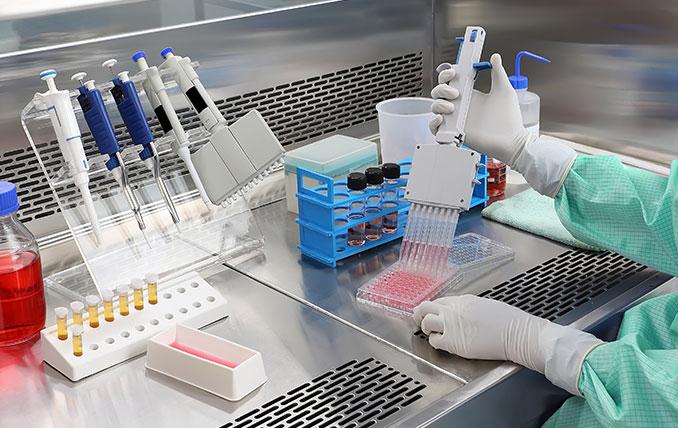If you’re diving into the world of lab work, having a laboratory pipette that offers reliable accuracy is key. Whether you're working with tiny volumes or making precise dilutions, you want to trust that your measurements are spot on. A quality pipette should deliver consistent results every time you use it, ensuring that your experiments yield valid outcomes.
Look for pipettes that come with calibration features. Calibrating ensures that your tool maintains accuracy over time. Many models allow you to recalibrate easily, which can be a lifesaver when you’re under a tight timeline. Some even have digital displays that help you keep track of settings, so there’s less guesswork involved.
Another thing to consider is the volume range of the pipette. It’s important to pick a model that can handle the specific volumes you’ll be working with frequently. Some pipettes come with adjustable volume settings, making them versatile for different tasks. This flexibility can really help streamline your work and make sure you’re getting those precise measurements you need.
Finally, don’t forget about the materials. A pipette made from high-quality materials can provide better durability and resistance to chemicals. This means fewer worries about wear and tear that could throw off your accuracy. For help in making a smart choice, check out our laboratory pipette buying guide to ensure you pick the best option for your needs.
Comfortable Grip for Easy Handling
When it comes to using a laboratory pipette, comfort is key. A comfortable grip can make all the difference, especially during those long hours in the lab. Quality pipettes are designed with ergonomics in mind, allowing you to handle them easily without causing strain on your hand or wrist.
Look for features like soft, non-slip grips that make holding the pipette feel natural. This can help reduce fatigue and increase your precision when transferring liquids. Some pipettes even come with adjustable grips, accommodating different hand sizes. This means that whether you're using it for a short time or an extended period, you’ll be able to maintain control and focus on your work.
In our laboratory pipette buying guide, it’s helpful to consider the weight and balance of the pipette as well. A well-balanced pipette allows for smoother transitions between tasks, making the whole process feel effortless. Plus, a lightweight design can help you avoid that pesky wrist cramp during those detailed experiments.
Don't forget about how the grip feels when you're working with various liquids. A good pipette should allow you to control the flow with ease, so the design should facilitate a firm grasp without slipping. By paying attention to these details, you can enhance your lab experience and improve your overall efficiency. Happy pipetting!
Durable Materials for Long-Lasting Use
When you're on the hunt for a quality laboratory pipette, one of the top features to consider is the materials used in its construction. A pipette made from durable materials means it can handle the rigors of daily use in a lab setting without breaking down. This reliability not only saves you money in the long run by reducing replacements, but it also ensures consistency in your work.
Look for pipettes crafted from high-quality plastics or glass. These materials resist chemical corrosion and stress, which is essential if you're working with various liquids. Glass pipettes are especially great for precise measurements, as they don't react with most solutions, giving you peace of mind when performing experiments.
Another aspect to check out is whether the pipette features any protective coatings. Some models come with special finishes that enhance their durability, making them more resistant to scratches and wear. This is a big plus in busy labs, where equipment can often get bumped or knocked around.
In our laboratory pipette buying guide, we recommend opting for pipettes that have been tested for longevity and shock resistance. Durable products will ensure you can focus on your work rather than worrying about your tools. Plus, a well-made pipette offers smooth operation and accurate dispensing, which are crucial for any lab task.
Variety of Sizes for Every Need
When it comes to laboratory pipettes, one size definitely doesn’t fit all. They come in a variety of sizes to match different tasks and volumes, which makes them incredibly versatile tools in any lab setting. Whether you're working with tiny samples or need to measure larger volumes, there’s a pipette out there that’s perfect for you.
Small-volume pipettes usually handle anywhere from 1 to 1000 microliters. These are your go-to for those precise measurements, especially when working with reagents or samples that require a careful touch. On the other hand, if you're dealing with larger volumes, you might want to look into a multi-channel pipette or a larger capacity option that can manage volumes up to 50 milliliters or more.
One great thing about the variety in sizes is how it enhances accuracy and efficiency. Using the right-sized pipette means less chance for error and quicker results. It’s super important to pick the right size based on your specific needs, and that’s where a solid laboratory pipette buying guide can really help. It can help you understand which size works best in your workflows and applications.
For many laboratories, having a range of sizes available can make all the difference. You might even find that having several pipettes in your kit allows for greater flexibility and responsiveness to different experiments. So, when you're out there shopping, keep size options in mind, and choose what aligns best with what you do day in and day out!

